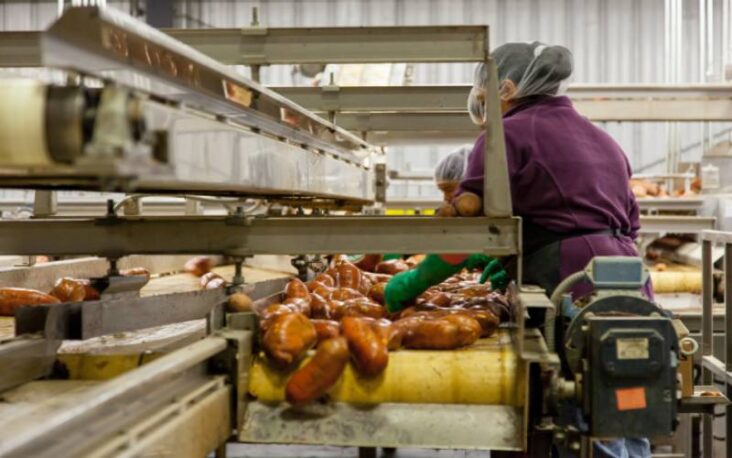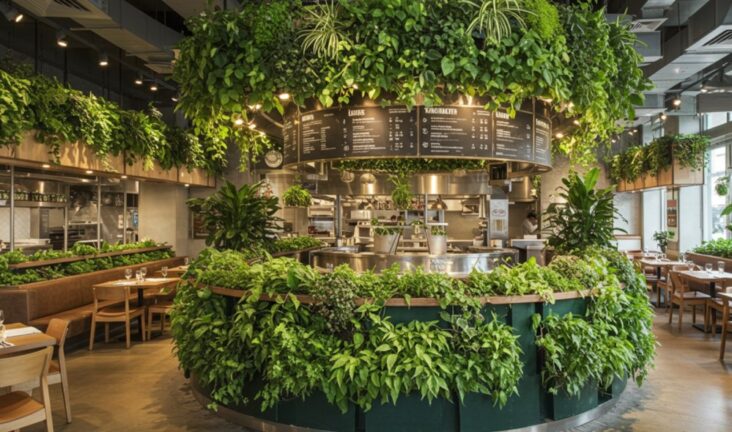The restaurant industry has long been celebrated for its creativity and hospitality, but it has also faced criticism for its environmental footprint. From excessive food waste to high energy consumption, restaurants contribute significantly to pollution, deforestation, and climate change. As consumer awareness of sustainability grows, the pressure on restaurants to adopt eco-friendly practices is intensifying. Fortunately, there are numerous strategies that can help the industry reduce its environmental impact while maintaining profitability and customer satisfaction.
Reducing Food Waste

One of the most pressing sustainability challenges for restaurants is food waste. Globally, approximately one-third of all food produced is wasted, and the restaurant industry contributes significantly to this figure. Reducing waste not only helps the environment but also improves the bottom line. Restaurants can implement several strategies to address this issue:
- Portion Control: Offering different portion sizes or creating smaller, customizable options allows customers to take only what they need, reducing uneaten food.
- Inventory Management: Advanced inventory tracking systems can prevent over-ordering and spoilage. By monitoring stock levels and using predictive analytics, restaurants can align purchasing with actual demand.
- Creative Use of Ingredients: Transforming leftovers or surplus ingredients into soups, sauces, or daily specials ensures that food doesn’t go to waste. Restaurants like this also appeal to eco-conscious diners who value sustainability and environmental responsibility.
- Donation Programs: Partnering with local charities to donate surplus food helps communities while reducing waste. This practice has become increasingly common and is often highlighted as part of a restaurant’s sustainability efforts.
Sourcing Locally and Seasonally
The sourcing of ingredients is another critical area where restaurants can make a sustainable impact. Importing out-of-season produce or heavily processed items increases carbon emissions due to transportation and storage. Local and seasonal sourcing offers several benefits:
- Reduced Transportation Emissions: Purchasing from nearby farms or suppliers decreases the carbon footprint associated with shipping food long distances.
- Support for Local Economy: Local sourcing strengthens community ties and promotes regional agriculture.
- Fresher Ingredients: Seasonal produce is often fresher, tastier, and more nutrient-rich than items shipped from afar.
Restaurants can highlight their commitment to local sourcing on menus, creating an additional marketing advantage. Some establishments even collaborate with farmers to develop unique, seasonal dishes, fostering innovation while staying sustainable.
Eco-Friendly Packaging

Takeout and delivery services have surged in recent years, making packaging waste a significant concern. Single-use plastics, Styrofoam containers, and non-recyclable materials contribute heavily to environmental degradation. Sustainable alternatives include:
- Compostable or Biodegradable Packaging: Made from plant-based materials such as cornstarch or sugarcane, these items break down naturally without harming the environment or ecosystems.
- Recyclable Materials: Glass, aluminum, and certain types of paper can be recycled effectively, reducing landfill accumulation.
- Reusable Containers: Some restaurants offer incentives for customers who bring their own containers, encouraging a circular economy.
Additionally, restaurants can reduce the use of disposable utensils, straws, and napkins by offering them only upon request, minimizing unnecessary waste.
Energy Efficiency and Water Conservation
Restaurants are energy-intensive, with large kitchens, refrigeration units, and heating systems running constantly. Implementing energy-efficient practices can reduce costs and environmental impact:
- LED Lighting and Energy-Efficient Appliances: Replacing incandescent bulbs and outdated equipment with energy-saving alternatives lowers electricity consumption.
- Smart Thermostats and HVAC Systems: Automated systems optimize energy use, maintaining comfort while reducing waste.
- Water-Saving Measures: Installing low-flow faucets, efficient dishwashers, and water recycling systems can conserve water, a resource often taken for granted.
Regular maintenance of equipment also ensures optimal efficiency, preventing unnecessary waste of energy and water.
Sustainable Menu Design

Sustainable choices extend beyond operational practices into menu design. Restaurants can prioritize plant-based dishes, responsibly sourced proteins, and seasonal ingredients to reduce environmental impact. Plant-based meals have a significantly lower carbon footprint compared to meat-heavy dishes, making them a practical sustainability strategy.
Moreover, transparency in sourcing can enhance customer trust. For example, highlighting sustainably caught seafood, organic produce, or humanely raised meats demonstrates a commitment to environmental responsibility.
Waste Management and Recycling

Beyond food and packaging waste, restaurants generate significant amounts of recyclable and compostable material. Implementing comprehensive waste management programs can make a measurable difference:
- Sorting Waste: Staff should be trained to effectively separate recyclables, compostable items, and landfill waste.
- Composting: Food scraps and biodegradable items can be turned into nutrient-rich compost, supporting local agriculture or landscaping projects.
- Recycling Programs: Partnering with municipal recycling initiatives ensures the proper disposal of materials such as cardboard, glass, and metal.
In addition to environmental benefits, visible sustainability initiatives can strengthen a restaurant’s brand, attracting environmentally conscious customers.
Sustainable Uniforms and Chefwear
Sustainability in restaurants extends beyond food and operations—staff clothing also has an environmental impact. Many restaurants invest in uniforms that are frequently replaced due to wear and tear, contributing to textile waste. Choosing high-quality, eco-friendly apparel can make a meaningful difference.
Chefwear, a leading provider of sustainable restaurant clothing, offers chef jackets, aprons, and staff uniforms made from organic, recycled, or responsibly sourced fabrics. By outfitting staff in durable, eco-conscious clothing, restaurants can reduce waste, promote ethical manufacturing practices, and reinforce a culture of sustainability. Not only does this choice support environmental goals, but it also strengthens the restaurant’s brand by demonstrating a commitment to responsible sourcing and operational practices.
Green Building and Design

Restaurant design and construction also play a role in sustainability. Eco-conscious design strategies include:
- Energy-Efficient Infrastructure: Insulation, double-glazed windows, and solar panels reduce energy use.
- Sustainable Materials: Using reclaimed wood, bamboo, or recycled metal minimizes environmental impact.
- Natural Lighting and Ventilation: Strategic placement of windows and vents reduces reliance on artificial lighting and climate control.
Even small changes, such as using low-VOC paints or recycled flooring materials, contribute to a healthier indoor environment for staff and guests while supporting broader sustainability goals.
Community Engagement and Education
Restaurants can extend their sustainability efforts by engaging with the community and educating customers. Hosting workshops on composting, sourcing, or plant-based cooking encourages patrons to adopt environmentally friendly habits. Collaborating with local farms, suppliers, and environmental organizations strengthens the restaurant’s role as a sustainability leader in the community.
Social media and digital platforms can amplify these efforts, showcasing the restaurant’s green initiatives and inspiring others to follow suit. By building a transparent, eco-conscious brand, restaurants not only improve the environment but also enhance customer loyalty and market reputation.
Measuring and Monitoring Impact
Finally, sustainability requires accountability. Restaurants should track and measure their environmental impact regularly. Key metrics include energy consumption, water usage, waste diversion rates, and sourcing practices. Data-driven approaches help identify areas for improvement, justify investments in green initiatives, and demonstrate progress to stakeholders.
Adopting certifications such as LEED, Green Restaurant Association, or ISO 14001 can provide external validation of a restaurant’s commitment to sustainability. Such recognition can attract environmentally conscious customers and set industry benchmarks for responsible practices.

